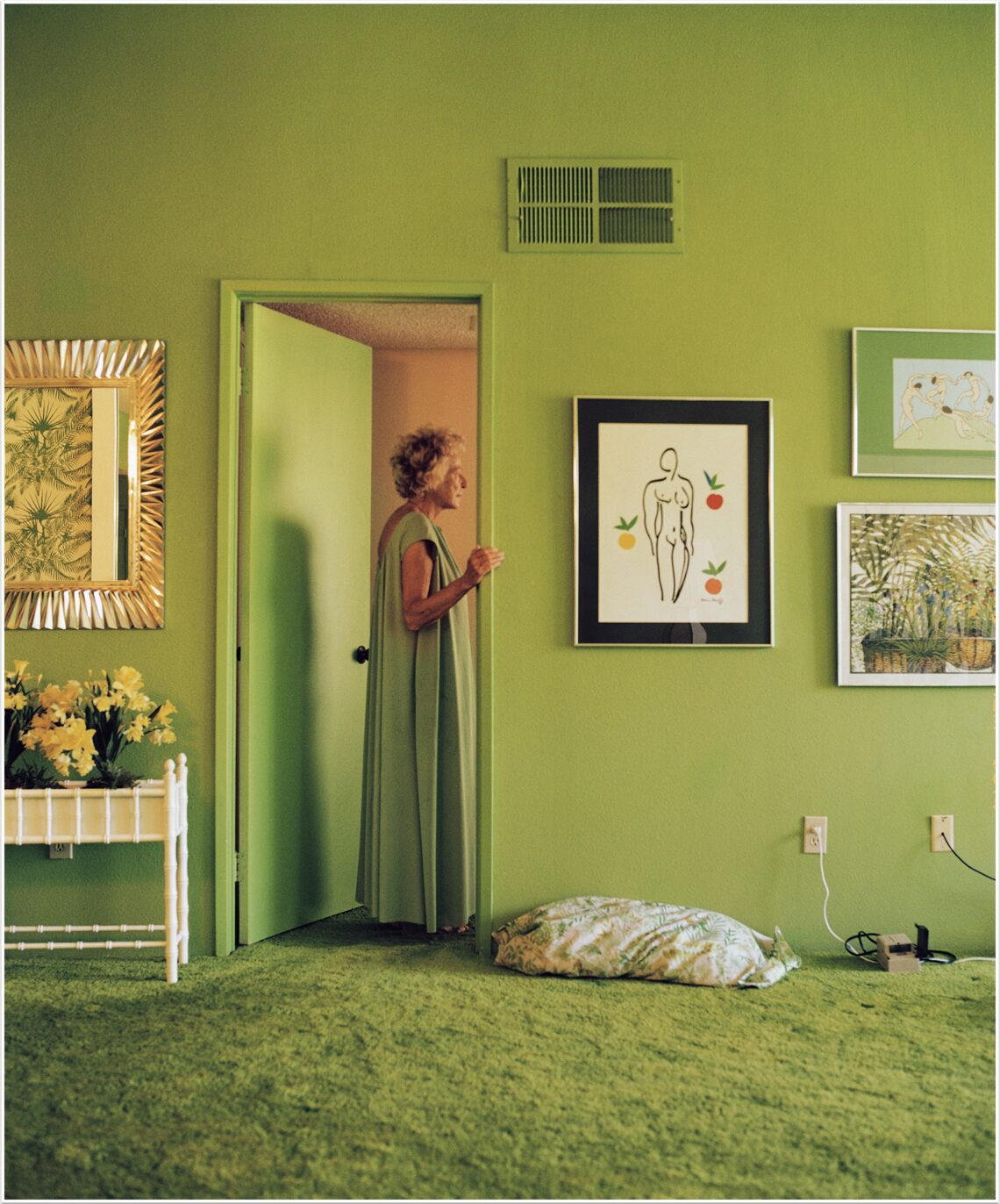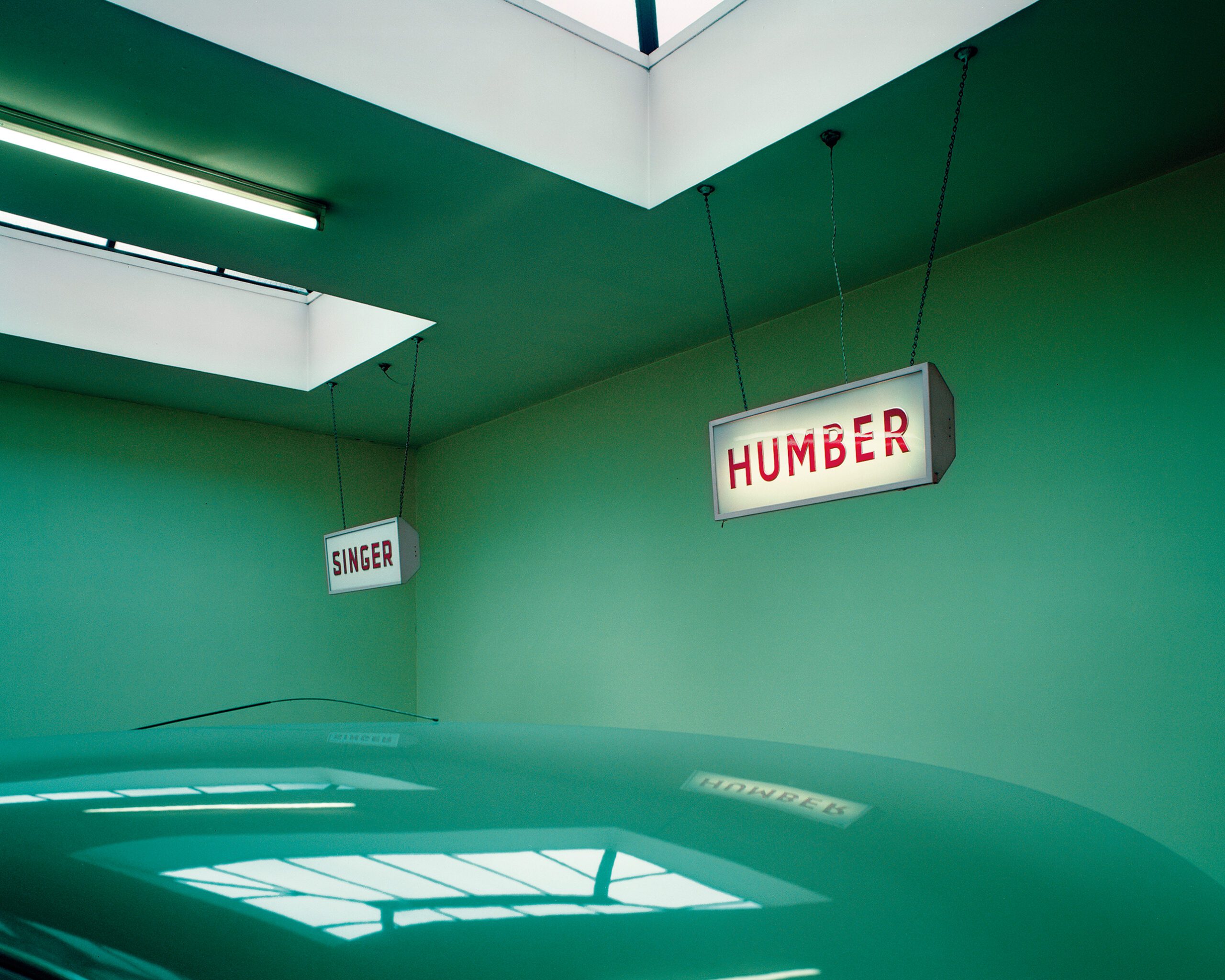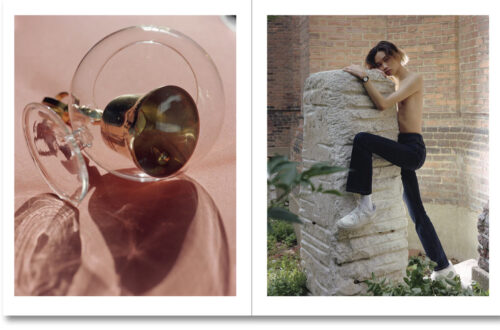
Book Review – Pictures from Home by Larry Sultan
The work was “about family history and the American dream, and how those two intersect,” Larry Sultan told The Times in 1989. “My father bought a one-way ticket from New York in 1949 and ended up in a dream house in Sherman Oaks. It was part of the cultural myth of the ‘50s about going west.”

Larry Sultan was born in Brooklyn on 13 July 1946, but he primarily grew up in Los Angeles, California and graduated college with a degree in Political Science at UCLA and UCSB.
He began photographing in 1968, for the Chicago Seed and the Good Times. “It was the psychedelic culture and photographing rallies and trying to blend my political orientation to photography. But it wasn’t until the early 1970s, when I went to Rhode Island School of Design (RSID) for about three weeks to graduate school and quit. It was only when I studied at the Art Institute that I thought of photography as an art form”.
Starting photography, “Primarily out of default’, he expressed “there was nothing else for me to do that I thought had any value or interest or meaning. Also the times were so interesting, the streets were interesting, so being a photographer allowed me to be a witness, to participate in a way that felt right for my blend of being alienated”.

Sultan was not into the 1970’s ‘romantic tradition’ of photography, he also admitted that he didn’t understand the language of academic critique. But what Sultan really excelled at and this is evident in most of his work, was the ability to collaborate with others and to then produce public art.

Initially, Mike Mandel, who was also from Los Angeles became his first collaborator and they continued working together for 23 years, out of this entire 30 year working life. They started work around found photography and appropriated imagery and completed a large billboard, with a 23 foot photograph in Emeryville. During this period they were also studying at the Art Institute. Unfortunately, Mandel’s degree was declined on the basis that it only contained ‘found photographs’. Times, have since changed.
Collaboration was a big driver for Sultan, “collaboration is a way of edging each other on, of pushing past the boundaries of taste or magnitude or scale. You enable each other. Quite a few of the projects we did weren’t that much fun to do and so having someone to do them with makes all the difference in the world”.
No more evident is Sultan’s collaboration style than in his book ‘Pictures from Home’. I am reviewing the second edition of the second printing of this book by MACK Books here but the original, first edition was published in the early 1990’s and is highly sought after. This MACK design of Pictures from Home doubles the page count of the original book and clarifies the multiplicity of voices – both textual and pictorial – in order to afford a fresh perspective of this seminal body of work.
Emphasising the cinematic motion of the family’s home videos, the Super-8 film stills have been newly digitised and magnified, with select scenes running full-bleed across double-page spreads. Meanwhile, Sultan’s photographs of his parents as they go about their daily lives – against the quintessential backdrop of the Reagan-era American dream – are supplemented with previously unpublished images. Most significantly, the book honours Sultan as the oft-hailed ‘King of Colour Photography’.

The original idea behind the book was according to what Sultan felt the Republicans, who were in power, had ‘hijacked the family and turned it into an ideological tool and family values’. Sultan perceived family life as far more complex than that. He saw the family as an ‘institution’ and one that most people still believed in. “We don’t believe in certainly the government. Most of us don’t believe in the church, certainly we don’t believe in the bank. The family still has a pull so it’s a really interesting place”, he exclaimed.
Sultan’s father was a strong dominate force within his family. Having grown up as an orphan in the lower classes, he reached the level of Vice President at Schick Safety Razor, through hard work and true grit. He was initially ashamed of Sultan’s artist status and regularly called him a ‘loser’. But Sultan was not deterred, he questioned the family practice through documentary eyes. When his father was in his 50’s he lost his job and never worked again. This meant a change in lifestyle for them all.

In 1983, Sultan stared to study the family fuzzy Super-8 films that his parents had captured as he was growing up and enjoyed creating stills of these. He was really looking for himself in the films, trying to make sense of his childhood and from here the idea grew into what he really wanted to do, and that was to create a series of work based on his father.
Almost a decade later, in 1992, the book, ‘Pictures From Home’ was published. One of the many interesting points to his thought process with this project, was how he felt he was taking something from his parents, that he was literally ‘taking’ their photos.
Many were quite intimate and he then intended to exhibit them in public domain. This bothered him, so he asked his parents to collaborate and thus it became a joint enterprise. They wrote together, they staged photos together, sometimes Sultan did the weeding for them and throughout this process, he managed to resolve a lot of personal issues he had regarding his family life as he was growing up, it was a catalyst.

Despite previous support for his Guggenheim when he returned to New York and took his project to The Modern, they were not interested and refused to see him. They were prejudices, ‘why is a man shooting families, why is this family remotely interesting?’. Yet, Sally Mann and Tina Barney were doing just that at this time and the doors were opening for them. Sultan needn’t have worried, five years later Jock Reynolds who was at the WPA, gave the first showing of his work and it went from there.
When his parents attended one of the openings at the Museum of Contemporary Arts in San Diego where the show was travelling and people were asking his father for his autograph, he said to Sultan: “I don’t know whether I am making you famous or your making me famous”. His father could not fathom how anyone would be interested in him, ”you’ve got to be out of your mind. Why would anyone be interested in me”?, he said.
The book itself is bigger than the original, it contains stills from the fuzzy Super-8 family films among the original still shots. The first 12 pages are devoted to a home movie of Sultan as a young boy, jumping through a red hoop which his father is holding, perhaps there is a metaphor there.
The sequencing to the next page is perfect, as is the sequencing throughout this spectacular book. We then come to the title page and then to the next page, which is ‘Chapter One’ and there’s the most beautiful eulogy, it says “The house is quiet. They have gone to bed, leaving me alone, and the electric timer has just switched off the living-room lights. It feels like the house has settled in and finally turned on its side to fall asleep. Years ago I would have gone through my mother’s purse for one of her cigarettes and smoked in the dark. It was a magical time that the house was mine. Tonight, however, I’m restless. I sit at the dining-room table; rummage through the refrigerator. What am I looking for?”
And there is a photograph of his father looking out of the house into the street on the opposing page, which is also the front cover of the book.
Next we turn the to page 16 and there is the thrill of a whole page of text, that says, “all day I’ve been scavenging, poking around in rooms and closets, peering at their things, studying them. I arrange my rolls of exposed film into long rows and count and recount them as if they were loot. There are twenty-eight.
I can hear my mother snoring through the closed bedroom door. Without my asking, she has left a Valium tablet for me. It is sitting on the bathroom counter, next to a full glass of water. I don’t sleep well here. The pillow is too high and spongy, the sheets polyester, the blanket too thin. I wake up in the middle of the night filled with the confusion of motels. This is not my house.
The house where I grew up was sold long ago. Of the three houses that they have lived in since they moved to California from Brooklyn, this one, with its twenty-foot cathedral ceilings and Italian tile floor, is the least alive for me. At the same time, it seems to have a life of its own: the radio turns itself on in the morning with the sprinklers; the lights go on in the evening and turn themselves off at eleven. Everything is under control.
Sitting finally on the couch in the dark living room, I begin to sink. I feel chills moving up my back and along my arms. I become sensitive to night sounds: the stirring of the dog, the refrigerator, a neighbour’s car and automatic garage door, my parents in their bedroom. My body seems to grow smaller, as if it is finally adjusting itself to the age I feel whenever I’m in their house.
It’s like I’m releasing the air from an inflatable image and shrinking back down to an essential form. Is this why I’ve come here? To find myself by photographing them?” And opposite the text there is a close up photograph of his mother’s bedside cabinet complete with a photograph of her and her husband together, a blood pressure sleeve, a book, glasses, what looks like a glass of coke and some pills, the drawer beneath is open and it is possible to see the colours of pink upon the clothing within.

Next we turn to my personal favourite image within this book and it is a photograph of his parents in bed, reading. It is the overarching normality of the image that I love, the scene is serene. They are both laying next to one another, the father looks like he is reading some business pages and the mother is reading a glossy magazine. The bedside lights are on each side, they have more papers and magazines scattered around them, some on the bed and some on the floor on the father’s side. There’s one yellow blanket covering them and yellow is quite a theme in this house and it is possible to view the landscape of their bodies beneath the covers. A throw, has been thrown off at the bottom of the bed.
Next and again, this is the greatness of the sequencing within this book, we see them at a table together, reading once again. In the foreground an orchid has lost some of its petals, they spill out in front of the view. Upon the yellow flowered wallpaper are many framed artworks, macrame and a cuckoo clock.
“Every few months I visit, loaded down with camera gear and ideas for pictures. It takes a day or two for most of these ideas to seem strained or foolish and then I’m left with cases of unexposed film and a feeling of desperation. I bargain with my father, trading him hours of weeding in his garden for minutes of his time posing for me.
When I finally begin to photograph him, I feel so anxious that I retake the same pictures I made years ago. After a few days of this I become so distracted that I miss most of the wonderful, daily things and instead I begin to act like an anthropologist or a cop — photographing shoes, papers, the surfaces of dressers. Evidence. It’s only when I give up trying to make pictures and begin to enjoy the time spent with them that anything of value ever happens.

The other day my father asked me, “What do you do with all those pictures that you make? You must have thousands of them by now.” When he takes pictures, he has the entire roll printed and keeps all of the three-by-five-inch prints in envelopes that one day he plans to put into albums. A few years ago he presented me and my two brothers with scrapbooks filled with pictures that he had made of us over the years. Our snapshot biographies.
I tell him that most of my photographs aren’t very interesting and so I just file the negatives away in boxes.
He can’t believe it. “You shoot thirty rolls of film to get one or two pictures that you like. Doesn’t that worry you?” He has a knack for finding the sore spot. “No. I love making pictures, even if most of the results are lousy.” The real issue is that many of the pictures that I do like trouble me more than all the ones that are filed away. I worry that they will trouble him as well.
I remember arguing with him over fifteen years ago about a photograph I made of my mother. It was a very simple and direct picture of her standing in front of a sliding glass door holding a cooked turkey on a silver platter. He accused me of creating an image that had less to do with her than with my own stereotypes of how people age. I argued that our conflicting notions about who mom is and how she should be represented are based on our different relationships to her. She is my mother but his wife. I pointed out that in almost every picture of her that he has taken she is posed like a model selling one thing or another.
“Look,” I said, “I don’t see her in that way, I don’t glamorise her with my photographs and that’s why you claim that the pictures undermine her vitality. It’s your image of her vitality that they counter.”
“All I know is that you have some stake in making us look older and more despairing than we really feel,” he answers. “I really don’t know what you are trying to get at.”
Sadly, Sultan died of cancer in 2009 at his home in Greenbrae, Calif. at the age of 63. I can honestly say, hand on heart, this is one of the very most beautiful photography books I have reviewed. Don’t hesitate to purchase it if this review has made you as enthusiastic as it has me.
Larry Sultan
Pictures From Home (Second Printing)
Larry Sultan. Image from Pictures From Home (Second Printing) (MACK, 2021). Courtesy of The Estate of Larry Sultan and MACK
Publication Date: August 2021
Embossed hardback with printed image tipped-in front and back. 192 pages. 140 colour plates. 23 cm x 27. €45 £40 $55 – ISBN 978-1-910164-78-5
Follow this Amazon link below and click on ‘New’ under the ‘hardcover’ box for this 2021 edition of the second printing, it will be shipped free if you’re a prime member – this book retails for £45 and is money well spent.
Biography
Larry Sultan (b. 1946, New York; d. 2009, California) grew up in California’s San Fernando Valley, which became a source of inspiration for a number of his projects. His work blends documentary and staged photography to create images of the psychological as well as physical landscape of suburban family life. Sultan’s work has been exhibited and published widely.
Most recently, the Los Angeles County Museum presented a retrospective exhibition dedicated to the artist. His photography is included in the collections of the Tate Modern, Stedelijk Museum, Fotomuseum Winterthur, Los Angeles County Museum of Art, Art Institute of Chicago, Museum of Modern Art, Whitney Museum of American Art, Solomon Guggenheim Museum, and San Francisco Museum of Modern Art. Sultan was a beloved educator and taught at the San Francisco Art Institute from 1978 to 1988. He also served as a Distinguished Professor of Photography at California College of the Arts, San Francisco from 1989 to 2009.
Please help us…
TheAppWhisperer has always had a dual mission: to promote the most talented mobile artists of the day and to support ambitious, inquisitive viewers the world over. As the years passTheAppWhisperer has gained readers and viewers and found new venues for that exchange. All this work thrives with the support of our community.
Please consider making a donation to TheAppWhisperer as this New Year commences because your support helps protect our independence and it means we can keep delivering the promotion of mobile artists that’s open for everyone around the world. Every contribution, however big or small, is so valuable for our future.




